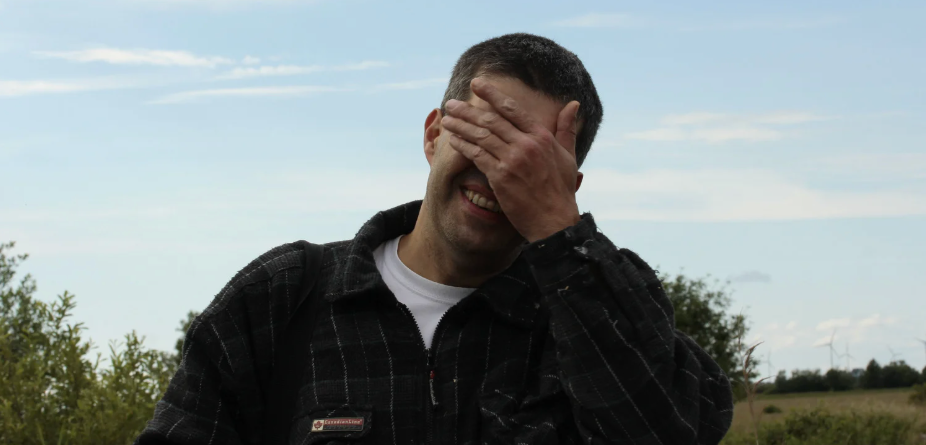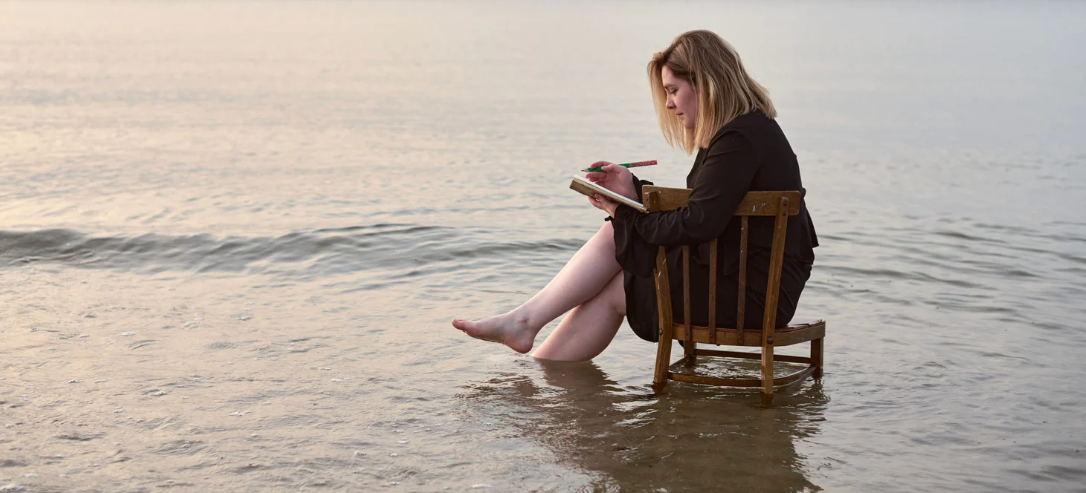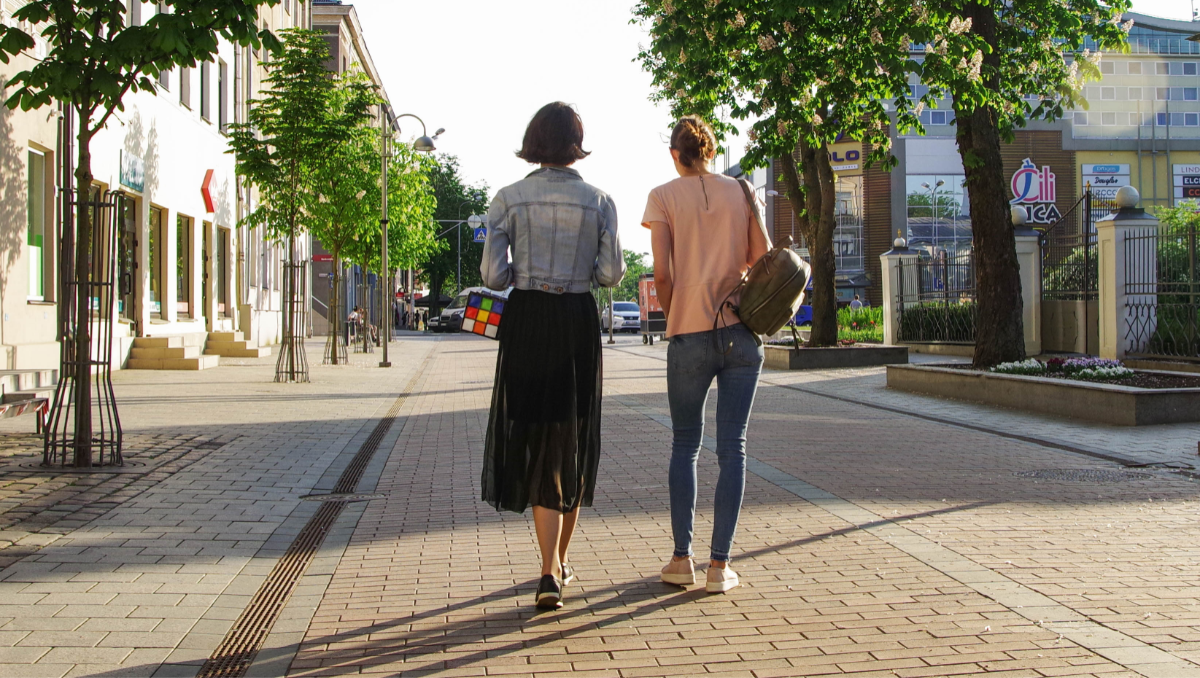A new report from the United Nations Educational Scientific and Cultural Organization (UNESCO) has highlighted 31 World Heritage Sites at risk of being seriously damaged by our changing climate.
Many of them are popular tourist destinations, and all of them would be devastating to lose — many represent important pieces of our culture and history.
Here are five iconic landmarks that are in serious danger from climate change and what it would mean to lose them:
1. The Galápagos Islands could see its food web collapse, forcing animals that rely on it to abandon its shores.
Off the coast of Ecuador lies the stunning archipelago of the Galápagos Islands. It's home to many species of animals, including tortoises, marine iguanas, sea lions, and, yep, even penguins! There are tropical, sun-loving penguins in the Galápagos!
It's a magical place.
Photo by Martin Bernetti/AFP/Getty Images.
Unfortunately, the weather system known as El Niño is getting worse, and it could disrupt the livelihoods of the Galápagos' unique collection of creatures. As the UN report states:
"El Niño affects the entire food web, with warmer waters reducing the upwelling of nutrients that usually characterizes the cold waters around the Galápagos, resulting in a reduction in phytoplankton availability and causing small fish and invertebrates to migrate away, as well as reducing the growth of algae on which many species rely."
Food webs are called webs for a reason. Every part of them structurally relies on the other parts; if even the smallest part is in danger, the whole thing is in danger.
Photo by Martin Bernetti/AFP/Getty Images.
After a visit to the Galápagos, Charles Darwin started positing his theory of natural selection, which forever changed the way we look at the natural world. The islands aren't just a beautiful vacation spot — they're home to a historic, culturally important, and fragile ecosystem.
2. Yellowstone National Park could become a dry wasteland.
Yellowstone became the world's first national park when President Grant signed the Yellowstone Act in 1872, designating the region a public "pleasuring ground" (probably right before he realized how weird that sounded).
People from all over the world come to see Yellowstone's jaw-dropping landscapes, cheer for the Old Faithful geyser, and see bison and moose, all the while wondering how to pluralize "bison" and "moose."
Photo by Karen Bleier/AFP/Getty Images.
Unfortunately, according to the UN report, Yellowstone is a candle burning at both ends. Warming temperatures are causing shorter winters and longer summers, which means less snowfall feeding the rivers, lakes, and wetlands during winter months, as well as a longer, more dangerous fire season during summer months.
Photo by Mark Ralston/AFP/Getty Images.
The vibrant forests of Yellowstone could be replaced with drier shrublands. And no one wants to Instagram that.
3. The Statue of Liberty is at "'high exposure' risk from sea-level rise due to the extremely low elevation of the island and its vulnerability to storms," according to the report.
In what is perhaps the greatest metaphor of all time for the threat climate change poses to our national interests, America's giant copper symbol of freedom and security is in pretty serious danger.
Photo by Kena Betancur/Getty Images.
For generations of immigrants, the Statue of Liberty has been a beacon of hope, an outstretched hand in a world of fists, a light at the end of the tunnel of tyranny where they could finally be free.
It remains a symbol of the promise of a second chance, comforting the tired, poor, and huddled masses, yearning to breathe free.
Rising sea levels, which are already a real-life disaster, could bring to life the iconic disaster-movie image of the "ruined Statue of Liberty." That would be a tragedy.
4. Stonehenge could become unstable and inaccessible due to flash flooding.
Stonehenge was constructed thousands of years ago by either ancient humans or aliens, depending on who you ask, and no one really knows how they did it. First of all, some of the stones were from 200 miles away. Second of all, the wheel wasn't even invented yet — it was barely a glimmer in the eye of some ancient Steve Jobs.
Photo by Matt Cardy/Getty Images.
There are theories, sure — everything from brute force to druid magic to this guy, who figured out how to move giant stones with the clever use of tiny stones (honestly, my money is on him).
Stonehenge gets over 1 million visitors a year. Climate change, combined with such heavy tourist foot traffic, could threaten the structural integrity of the world's most famous ancient monument.
"Of most concern for Stonehenge are increasing rainfall amounts, more extreme rainfall events and worsening floods," says the UN report. "Flash floods can result in damage through gullying and wetter conditions are also expected to increase the impact of visitors walking on the site."
Photo by Niklas Halle'n/AFP/Getty Images.
Frankly, if Stonehenge is in danger, that should be one of the biggest warning signs of all. The monument has stood for thousands of years and has remained in remarkably good shape. If the changing climate has the ability to ruin its winning streak, we should all be shaking in our boots.
5. Venice, Italy, is already sinking — but rising sea levels are making the floating city drown even faster.
Venice is one of the World Heritage Sites "most at threat" from sea level rise.
"Flooding at especially high tides or as a result of storm surges has always been an issue for Venice. But now, with sea levels rising, the problem is becoming much more severe," the report says.
Photo by Franco Debernardi/Getty Images.
The report also suggests that flooding in Venice could damage the buildings that sit on the lagoon, as it did in 1966. Venice's floodgates will also have to remain closed longer and longer, which could lead to worsening stagnant water pollution.
Venice is one of the world's most popular tourist destinations, and the city relies heavily on those tourist dollars. If the tourists stop coming because of the damaged buildings or unstable structures, the economic impact on the city will be massive.
Photo by Dan Kitwood/Getty Images.
Beyond economics, though, Venice is a city filled with history and vibrant culture. Its Renaissance architecture and old-world charm draw so much tourism for a reason. It's a beautiful place, and we should do what we can to keep it around.
The biggest takeaway from the UNESCO report is that climate change, left unchecked, can damage a lot more than we think.
There's a seemingly insurmountable amount of work to be done if we want to save these World Heritage Sites from their impending doom. There are some who say it's impossible, but humans have already done more improbable and incredible things.
We built a giant copper lady on an island to dedicate a nation to liberty. We protected 3,400 square miles of natural habitat by declaring it a national park. We discovered the origin of species. We built a city that floats on the water. We built ... whatever Stonehenge is.
And while that last thing was (debatably) created by aliens, the point is this: Humans are capable of amazing things. Stopping the effects of climate change can be one of them.
All it takes is the doing of it.




 Woman in denim jacket covers face with sleeve, standing outdoors with blurred background.
Woman in denim jacket covers face with sleeve, standing outdoors with blurred background. Woman with outstretched arms in a sunlit field, enjoying the outdoors.
Woman with outstretched arms in a sunlit field, enjoying the outdoors. Lush forest with vibrant green and orange foliage in soft, misty sunlight.
Lush forest with vibrant green and orange foliage in soft, misty sunlight. Friends laughing and drinking coffee at a cozy cafe table.
Friends laughing and drinking coffee at a cozy cafe table. Woman with curly hair in sunlight, eyes closed, wearing a purple top.
Woman with curly hair in sunlight, eyes closed, wearing a purple top. Man smiling with hand over face, standing outdoors against a blue sky background.
Man smiling with hand over face, standing outdoors against a blue sky background. Hand painting a still life on canvas with blue and orange tones.
Hand painting a still life on canvas with blue and orange tones. Woman sitting on a chair in the water, writing in a notebook at sunset.
Woman sitting on a chair in the water, writing in a notebook at sunset.


 Happy Girl GIF by RetMod
Happy Girl GIF by RetMod  Woman enjoying some self care time.
Woman enjoying some self care time.
 Women walking down a street.Image via Canva Photos.
Women walking down a street.Image via Canva Photos.  Woman aware of her surroundings in a parking garage. Image via Canva Photos.
Woman aware of her surroundings in a parking garage. Image via Canva Photos.
 "You're hilariously brilliant at everything you hate."
"You're hilariously brilliant at everything you hate."  "Bridget is authentically herself…and triumphs in her own way."
"Bridget is authentically herself…and triumphs in her own way."  "They're written in some curious language that I can't really understand."
"They're written in some curious language that I can't really understand."